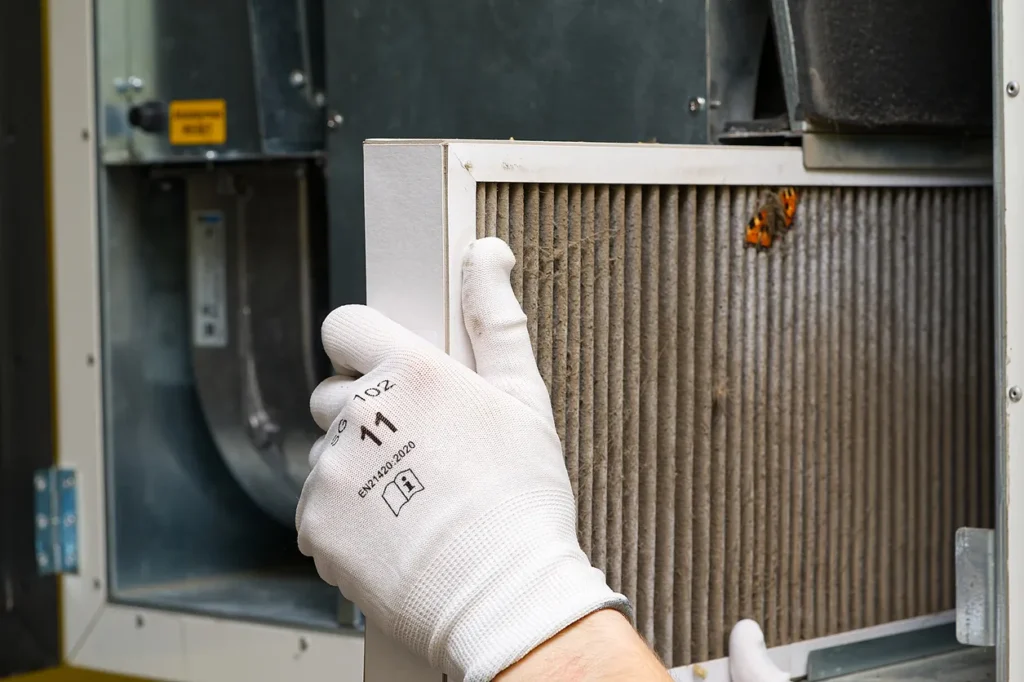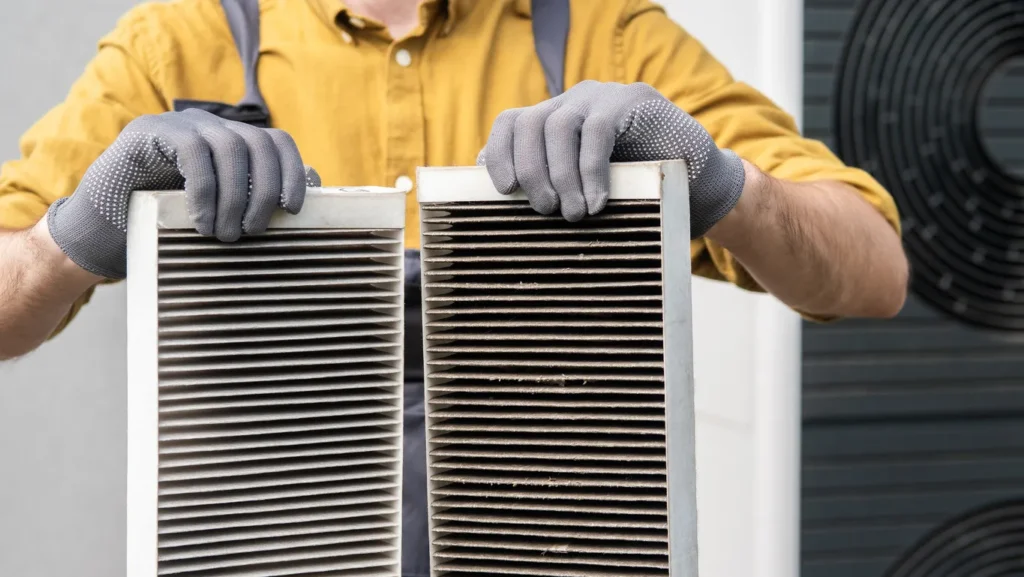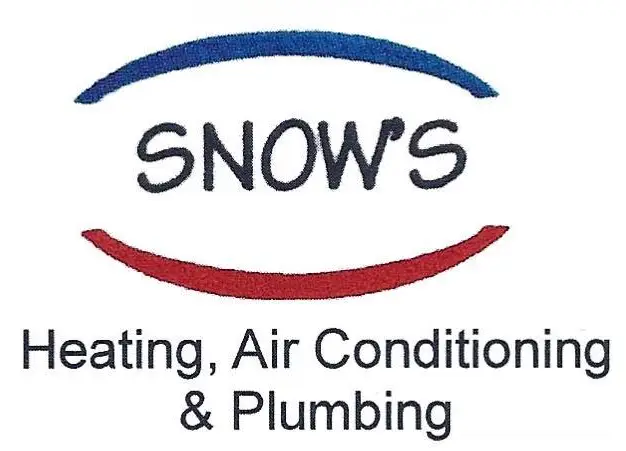How to Change Your Furnace Filter: A Clear, Step‑by‑Step Guide for Better Indoor Air

Changing a furnace filter is a quick, straightforward task: pull the used filter from your HVAC return or air handler and slide in a fresh one so airflow and filtration work as they should. Do this regularly and you’ll notice cleaner air, less strain on the blower motor, and a more efficient heating system. This guide walks you through when to change filters, how to pick the right one by MERV and type, and a simple, safe replacement routine you can do at home. We also explain how a clogged filter can cause system issues and affect health, how to keep track of changes, and the warning signs that mean it’s time to call a pro. Finally, we cover Ferron, UT specifics and how Snow’s Heating & Air Conditioning can help with inspections, filter choices, and regular maintenance if you prefer a technician to handle it.
Why Regular Furnace Filter Replacement Matters
Replacing your furnace filter on a schedule keeps dust and allergens from recirculating through your home and protects people who are sensitive to indoor air pollutants. A clean filter also maintains steady airflow so the blower motor runs efficiently — shorter run times and lower energy use. Beyond immediate air-quality wins, regular filter changes reduce dust buildup on coils and heat exchangers, which helps prevent premature wear and avoid costly repairs. Understanding how filters affect both health and equipment life makes scheduling replacements an easy choice.
How a Fresh Filter Improves Indoor Air
A new filter removes trapped dust, pollen, pet dander and larger irritants from the return-air stream, lowering particle counts in the air your home circulates. What a filter captures depends on its MERV rating and media, so picking the right filter determines which pollutants are removed. Homes with pets, allergies, or recent remodeling usually see the biggest immediate improvement after changing a filter. Keep Ferron’s seasonal patterns in mind — spring pollen and dusty, dry months mean you’ll want to check filters more often.
Energy and Cost Benefits of Keeping Filters Clean
A clean filter offers less resistance to airflow, so your furnace runs shorter cycles and uses less energy to reach the set temperature. Studies show that heavily restricted filters force systems to run longer, which raises utility bills. Over time, reducing stress on the blower and heat exchanger lowers repair needs and extends equipment life — savings that usually outweigh the small cost of routine filters. Treating filter checks as preventive maintenance saves money and hassle later.
If you’d rather leave inspections and filter swaps to a trusted technician, Snow’s Heating & Air Conditioning offers professional checks and replacement in Ferron, UT. We can do a quick system check, recommend the right MERV range for your household, and set up recurring visits so you never miss a replacement date.
How Often Should You Change Your Furnace Filter?
The ideal interval depends on filter type, household activity, and local dust or pollen levels. As a general baseline, disposable pleated filters usually need replacing every 1–3 months. Thicker or higher-efficiency filters can last longer if airflow remains good. Factors like pets, allergies, smoking, or construction shorten that timeline and call for monthly checks. A simple habit — inspect the filter monthly — helps you spot discoloration or buildup and replace the filter before it causes problems.
Below are common situations and practical recommendations to help you choose the right replacement schedule.
| Situation | Recommended Replacement Interval | Recommended Check Frequency |
|---|---|---|
| Standard household, 1–2 occupants | Every 2–3 months | Monthly visual check |
| Homes with pets (1–2 pets) | Every 1–2 months | Monthly visual check |
| Allergies or asthma present | Every 1 month or use a higher-efficiency filter | Every 2–4 weeks |
| New construction or renovations | Every 1 month during work | Weekly to biweekly during dust events |
| High-efficiency thicker filters (e.g., 4–6″) | Every 3–6 months if airflow is acceptable | Monthly initial checks |
What Affects How Quickly a Filter Loads Up?
Household and environmental factors change how fast filters fill with particles. Pet hair and dander are fast culprits, as are indoor smoking, many occupants, and renovation dust. Seasonal conditions in Ferron, UT — spring pollen or dry, dusty months — also speed up loading. Remember that higher MERV filters catch smaller particles but can clog faster or restrict airflow if the system isn’t matched to them. Match filter efficiency to your furnace’s capability for best results.
How to Track and Remember Filter Changes
Simple systems make filter maintenance consistent. Write the installation date on the filter frame with a permanent marker, set a recurring phone reminder, or sign up for a filter delivery subscription. Many HVAC companies offer maintenance plans that include scheduled filter changes — handy for busy households or those with health concerns. Combining a visible date, a digital reminder, and an optional subscription gives the best chance you won’t forget.
Furnace Filter Replacement — Step by Step

Change a filter with safety and order: turn power off, remove the old filter, install the correct replacement in the proper airflow direction, and run a quick check. Correct arrow orientation and a snug fit prevent bypass and ensure the filter works as designed. Follow these steps each time to avoid damaging panels or the frame and to confirm the system runs normally after the swap.
- Power off the furnace: Flip the furnace switch at the unit and set the thermostat to “off.”
- Locate the filter slot: Look at the return grille, wall filter frame, or the air handler slot.
- Remove the old filter: Pull it out carefully to keep dust from falling into the room.
- Check filter size and airflow arrow: Make sure the new filter matches the size and point the arrow toward the furnace.
- Insert the new filter and secure panel: Seat the filter snugly and close any access panels.
- Restore power and test: Turn the thermostat back on, listen for normal operation, and write the date on the filter.
How to Turn Off Your Furnace Safely Before Changing the Filter
Start by using the furnace power switch on the cabinet or nearby wall, then set the thermostat to “off” or “fan only” so the blower won’t start unexpectedly. If your unit has a clearly labeled service switch, use that; if not and you’re unsure, turn off the breaker. Never tamper with gas valves or controls — if you smell gas or feel unsure about procedures, stop and call a professional. These precautions prevent the blower from starting while you work and reduce electrical risk.
Where to Find the Filter and How to Remove It
Filters commonly sit behind the return grille, in a slot in the air handler or furnace cabinet, or in a removable drawer near the blower. Look for a rectangular slot or grille and the filter edge. Open the grille or panel, note how the filter sits, then slide it out straight to avoid shaking dust loose. If it’s stuck, ease a corner free and work it out slowly rather than forcing it. Clean any visible debris from the compartment before installing the new filter.
How to Install the New Filter with the Correct Airflow Direction
Most filters have an arrow showing airflow direction — point that arrow toward the furnace or air handler, away from the return. Confirm the frame’s printed size matches your slot; a filter that’s too small will allow bypass. Push the filter fully into place so it sits snugly and the access panel closes easily. Correct fit and orientation keep the filter effective and protect indoor air quality.
Final Checks After Replacing the Filter
After you replace the filter, restore power and set the system mode you want. Listen and feel for steady airflow and smooth operation. Watch for unusual sounds, vibration, or error codes on modern systems — these may signal installation issues or unrelated faults. Mark the replacement date on the filter frame or in a log and set a reminder for the next check. If airflow is still weak or system warnings persist after a new filter, call a pro for a deeper inspection.
Choosing the Best Furnace Filter for Your Home
Picking the right filter balances filtration efficiency, airflow, and your household’s needs. Key choices are size, MERV rating, and media type (pleated, fiberglass, electrostatic, or HEPA-style for whole-home systems). Higher MERVs catch smaller particles but can restrict airflow if your furnace isn’t designed for them — most homes find MERV 8–11 is a good compromise. Consider occupant sensitivities and your furnace’s specifications before upgrading.
| Filter Type | Typical MERV Range | Best Use-Case |
|---|---|---|
| Pleated furnace filters | MERV 8–13 | Balanced filtration for most homes and light allergy control |
| Fiberglass disposable filters | MERV 1–4 | Low cost, basic dust protection; not ideal for allergy control |
| Electrostatic filters | MERV 8–12 | Better capture of fine particles; helpful in pet homes |
| HEPA-style HVAC filters | MERV 13+ (or true HEPA in standalone units) | High-efficiency needs; check system compatibility with a pro |
What a MERV Rating Means for Performance
MERV (Minimum Efficiency Reporting Value) rates a filter’s ability to trap particles from about 0.3 to 10 microns. Higher MERVs capture smaller particles, but higher efficiency can mean increased pressure drop. For most households, MERV 8–11 captures pollen, dust, and pet dander without excessive restriction. MERV 13+ filters grab finer particulates but may require a technician to confirm your blower can handle the extra load.
Which Filter Sizes and Types Fit Different Furnaces?
Measure filter size by removing the current filter and reading the printed dimensions, or measure the slot’s height, width and depth to the nearest quarter-inch. Common setups use standard single-panel sizes or thicker 4–5″ media in filter racks; thicker filters can hold more dust with less pressure drop when installed correctly. Don’t force nonstandard filters into the slot — if you need a different configuration, consult a technician to confirm compatibility. Wrong sizes or overly restrictive filters reduce airflow and can harm performance.
For many Ferron homeowners, a short professional check makes choosing the right MERV and filter type simple. Snow’s Heating & Air Conditioning can recommend filters that suit local conditions and your furnace’s capabilities.
Problems a Dirty Furnace Filter Can Cause
A clogged filter restricts airflow and forces the HVAC system to work harder, raising energy use and speeding component wear. Dust can settle on heat exchangers and coils, lowering efficiency and increasing the chance of overheating or faults. Signs homeowners notice include weak vent airflow, uneven heating, and higher utility bills — often a quick filter change fixes these. Prioritizing regular filter care is a low-cost action with a big impact.
| Problem | System Impact | Homeowner Signs |
|---|---|---|
| Reduced airflow | Increased blower runtime and energy use | Weak vent airflow, longer heat-up times |
| Motor and component strain | Shortened lifespan, more frequent repairs | Intermittent operation or strange noises |
| Heat exchanger/coil fouling | Lower efficiency, possible overheating | Higher bills and inconsistent temperatures |
How a Clogged Filter Hurts Efficiency and Lifespan
When a filter blocks airflow, the blower runs longer to move the same amount of air, increasing energy use and the motor’s duty cycle. That extra workload accelerates wear on bearings and electrical parts and raises the chance of early failure. In extreme cases, poor airflow makes the heat exchanger run hotter, adding stress that can lead to costly repairs. If you notice weak airflow or frequent cycling, a clogged filter may be the culprit and should be addressed quickly.
Health Risks from Neglecting Filter Changes
Letting filters go too long raises indoor particle levels, exposing occupants to allergens and irritants that can trigger allergies, asthma and respiratory discomfort. Fine particles and pet dander that pass through an overused filter worsen chronic symptoms and reduce overall indoor air quality — especially for children, seniors, and people with respiratory conditions. Using the right filter and replacing it on schedule significantly lowers these risks. For homes with vulnerable occupants, choose higher-efficiency filters and replace them more often.
When to Call a Professional for Filter Service in Ferron, UT
Call a technician if symptoms point to problems beyond a routine filter swap or if you want help fitting a high-efficiency filter to your system. Persistent weak airflow, strange odors, frequent cycling, visible soot, or unusual noises after a fresh filter are signs a pro should inspect ducts, the blower, and combustion components. Planning to upgrade to MERV 13+ or install a thicker media rack also warrants a professional evaluation so your furnace can handle the added pressure drop without performance loss. Local techs can include filter checks in annual maintenance to catch issues early.
Signs You Need Expert Maintenance or Filter Service
Look for red flags: filters that clog rapidly despite regular changes, lingering odors or visible soot, cycling that continues after a filter swap, and sharp airflow drops at multiple vents. Safety signals — like carbon monoxide alarms or gas smells — require immediate professional attention instead of a DIY filter change. If you see these signs, shut off the system as appropriate and schedule an inspection to address root causes before they get worse.
How Snow’s Heating & Air Conditioning Can Help
Snow’s Heating & Air Conditioning serves Ferron, UT homeowners with professional filter replacement, indoor air quality checks, and maintenance plans that include filter inspections. Our technicians recommend the right MERV range and filter type for your furnace and can install thicker media or high-efficiency options after confirming compatibility. We offer emergency service and clear pricing, and we can set up recurring visits to keep your system on schedule and running efficiently. To request a quote or schedule a filter replacement or IAQ check, contact Snow’s Heating & Air Conditioning through our local service channels.
- Check symptoms first: Note airflow, odd sounds, or fast filter loading before scheduling service.
- Request a compatibility check: Have a technician confirm blower capacity for higher‑MERV filters.
- Consider recurring maintenance: Use scheduled visits to automate filter changes and seasonal checks.
Snow’s local service makes it easy to move from DIY maintenance to professional care when you need it, keeping the focus on system health and home comfort.
Conclusion
Regular furnace filter changes are one of the simplest, most effective ways to protect indoor air quality and keep your heating system running efficiently. With the right filter, a consistent replacement schedule, and simple tracking habits, you’ll reduce allergens and extend equipment life. If you prefer professional help, Snow’s Heating & Air Conditioning offers tailored service and maintenance plans to fit your needs. Take the next step toward a healthier, more comfortable home by exploring our maintenance options today.

